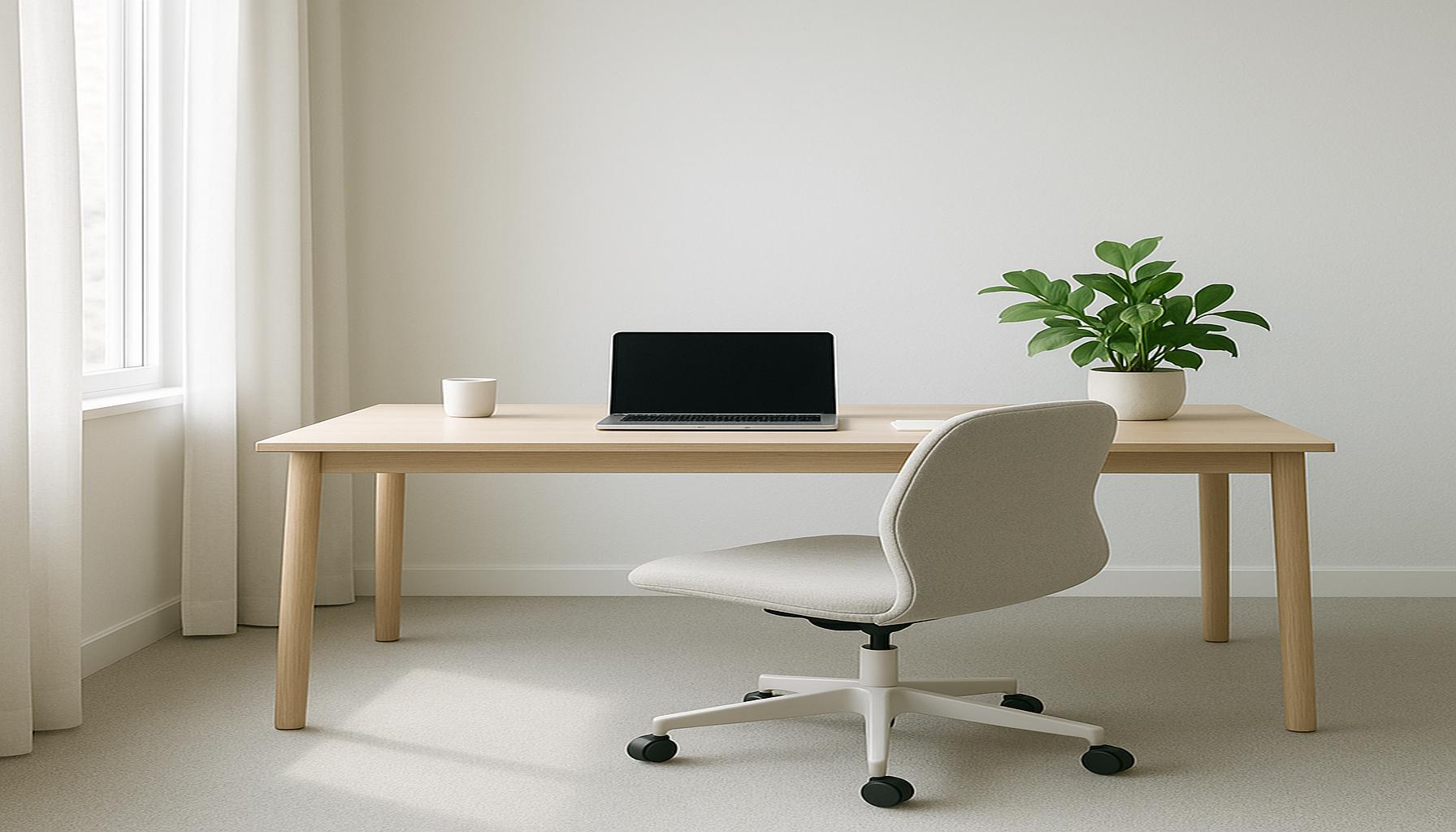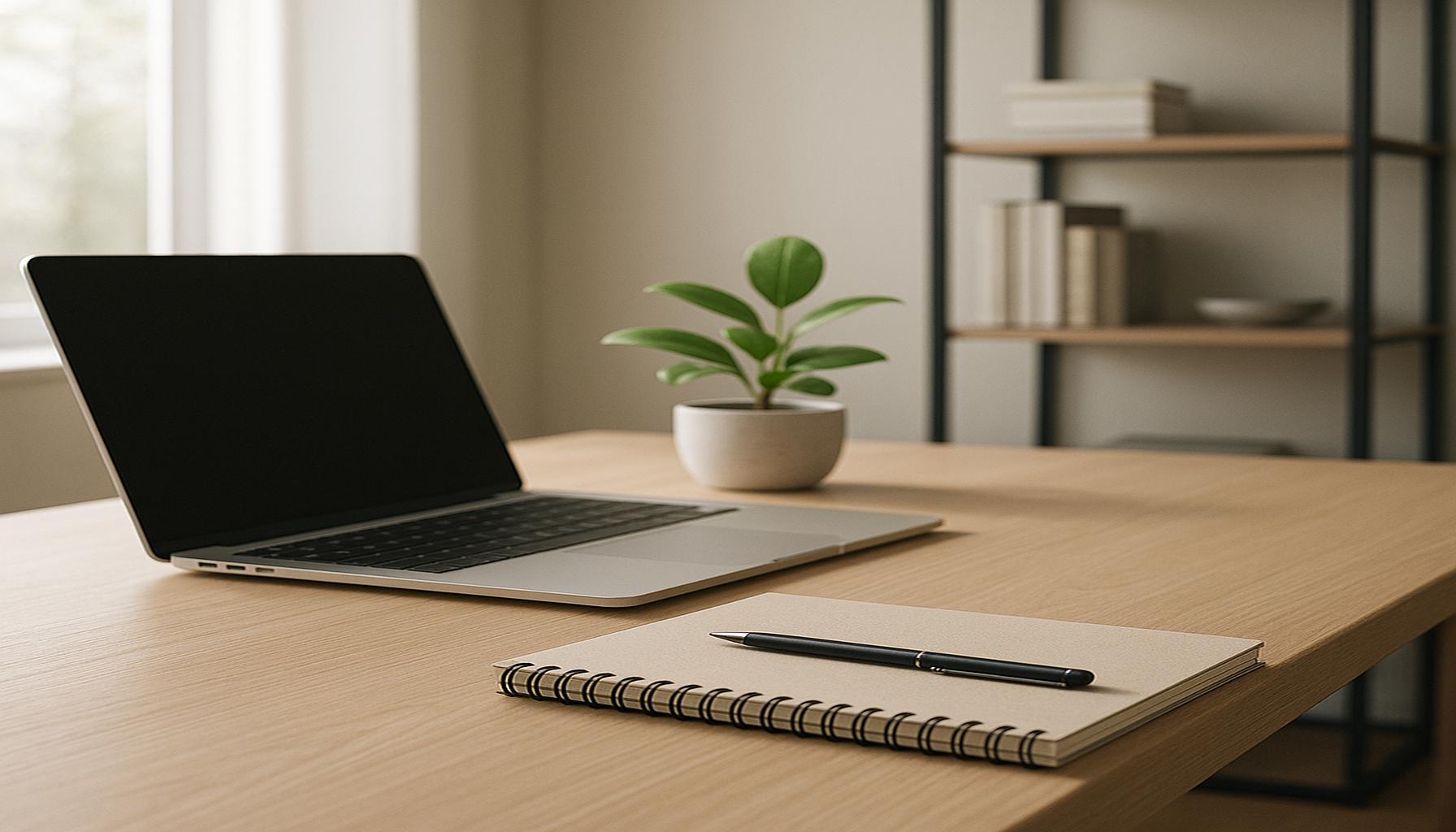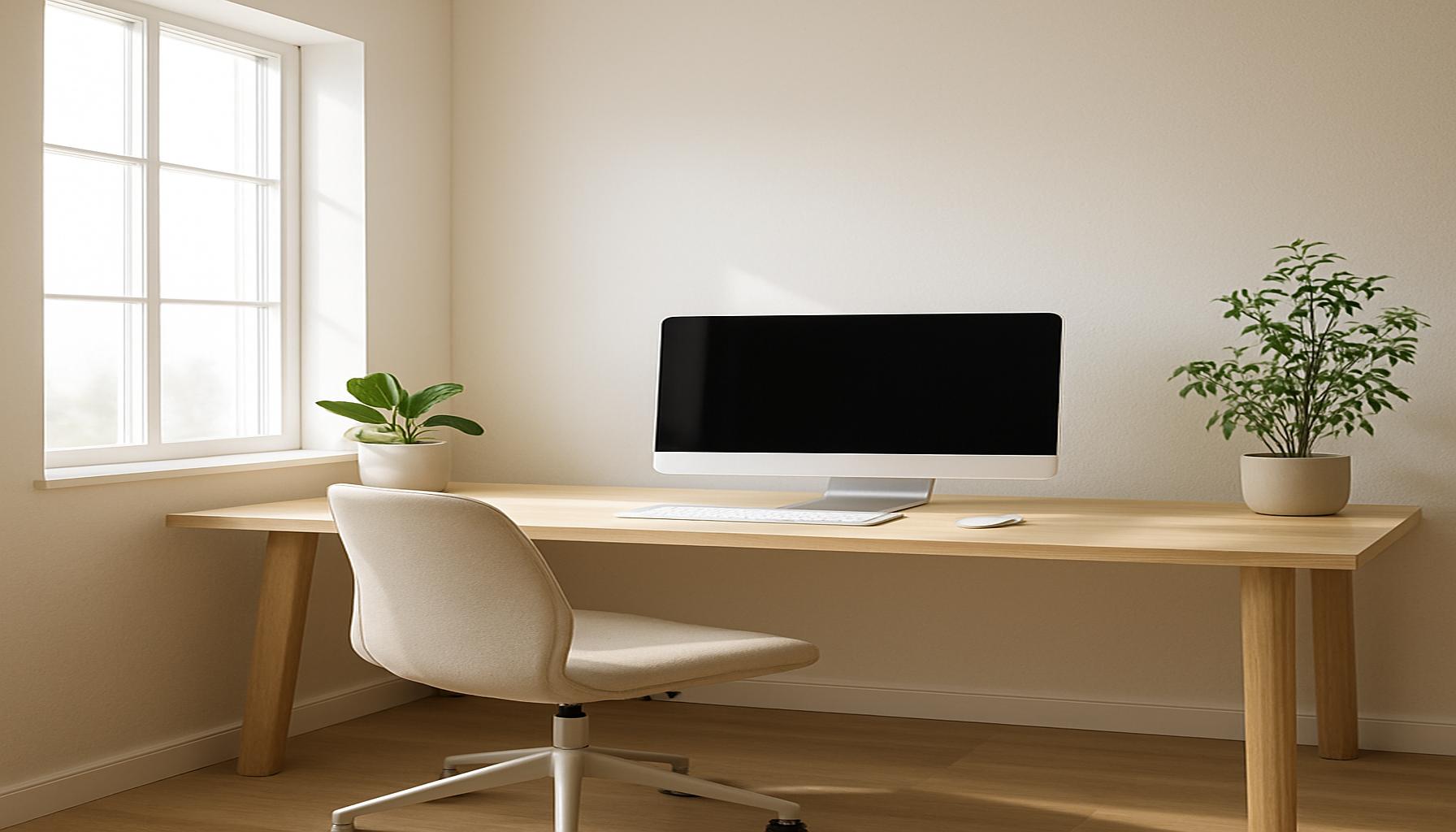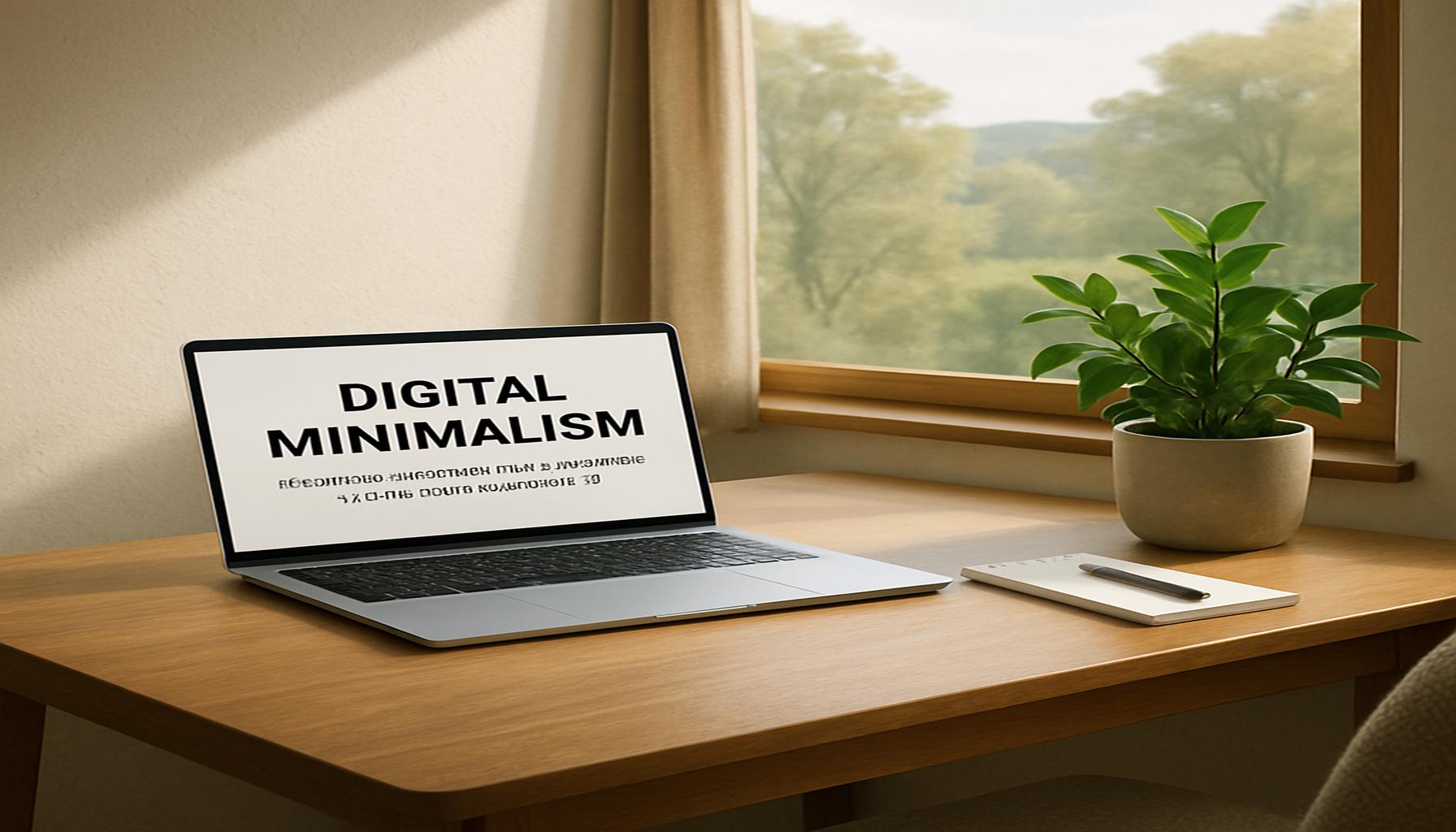The Effectiveness of Minimalism in Stress Reduction: How Less Can Be More in Work Environments

Understanding the Power of Minimalism in Workspaces
As the pace of life accelerates, both organizations and individuals are under immense pressure to maximize their efficiency and productivity. The results can sometimes be counterproductive, leading to chaotic and cluttered work environments that contribute to stress and overwhelm. Responding to this modern dilemma, a substantial movement advocating for minimalism has emerged, illustrating a pathway toward stress reduction and increased clarity.
Embracing minimalism—essentially the idea that less can be more—can transform not only physical spaces but also mental states. Imagine stepping into a workspace punctuated with clean lines, neutral colors, and unobtrusive designs. The effect is palpable; a minimalist environment can serve as a catalyst for cultivating focus and enhancing performance. The following benefits reflect the transformative impact that minimalism can have:
- Reduced distractions – A clutter-free environment minimizes visual noise, allowing individuals to hone in on their tasks without the constant pull of chaotic surroundings.
- Enhanced creativity – With fewer distractions vying for attention, the mind is free to wander and explore innovative ideas, leading to out-of-the-box solutions.
- Improved communication – Open, minimalist spaces often encourage collaboration among team members, breaking down barriers and fostering a sense of community.
Research supports these claims; studies have shown that cluttered environments can lead to feelings of anxiety and helplessness. By contrast, the implementation of minimalist strategies—such as reducing desk clutter, adopting a less-is-more mindset with office supplies, and utilizing open space design—can foster a healthier mental state among employees, promoting clarity and focus.
Exploring Minimalism in the Workplace
To delve deeper, we must consider what minimalism looks like within a professional context. It goes beyond just decluttering; it’s about creating an environment that aligns with one’s work goals. Some organizations have collaborated with interior design specialists to create minimalist office layouts that not only look appealing but also enhance workflow. For example, tech giants like Google and Apple have been well-documented for their innovative workspaces designed to inspire creativity and collaboration while maintaining a sense of order.
The Psychological Effects
Understanding the psychological implications of minimalism is equally vital. Research indicates that minimalism can reduce cognitive overload, allowing employees to feel more in control of their work. By simplifying their surroundings, individuals can decrease anxiety levels and increase job satisfaction. Several leading corporations have reported enhanced employee well-being and productivity in environments that emphasize minimalism and intentional design.

Ultimately, organizations that prioritize minimalism can reshape their work culture for improved well-being and success. This exploration of minimalism offers valuable insights and may serve as a call to action for leaders and teams across the globe. Adopting minimalism is not only a trend but a profound shift toward cultivating healthier, more productive workplace cultures.
DISCOVER MORE: Click here to learn about the mental health benefits of decluttering
Unpacking Minimalism’s Role in Enhancing Workplace Productivity
Minimalism in the workplace is not merely a design choice but a comprehensive approach that intertwines psychology, efficiency, and emotional well-being. By stripping away excess, organizations can reveal a framework that encourages productivity and reduces stress. But how can this phenomenon be measured and appreciated? It begins with understanding the key elements of minimalism and its direct implications for the modern work environment.
At its core, minimalism advocates for the elimination of distractions—both physical and cognitive. In a typical office scenario, overflowing paperwork, outdated supplies, and unnecessary decorations can create a chaotic atmosphere. This clutter can divert focus and lead to feelings of being overwhelmed, ultimately hindering productivity. The magic of minimalism lies in its capacity to cleanse the workspace, thereby fostering a clearer mental state.
The Benefits of a Minimalist Workspace
Research has consistently highlighted the myriad advantages of minimalism in reducing workplace stress. Here are some pivotal benefits that have emerged as organizations begin to embrace minimalist principles:
- Greater focus – A tidy, minimal workspace allows for better concentration as employees are less likely to be distracted by misplaced items or visual clutter.
- Increased efficiency – With fewer elements competing for attention, tasks can be completed more swiftly, leading to higher overall productivity levels.
- Cognitive clarity – Minimalism allows workers to streamline their thoughts, prioritizing tasks effectively and minimizing the mental fatigue associated with clutter.
- Enhanced emotional well-being – Less clutter equals less stress, contributing to a more peaceful and productive workplace atmosphere.
The implications of minimalism go even further; studies have suggested that office environments reflecting minimalist aesthetics can significantly impact a worker’s psychological well-being. For instance, research conducted by neuroscientists has shown that individuals in minimally designed environments report lower levels of stress and higher job satisfaction. This goes a long way in demonstrating that a thoughtfully curated workspace can enhance an employee’s experience.
The Shift Toward Minimalist Design Principles
In the rapidly evolving landscape of American workplaces, many companies are reconsidering their physical layout and design philosophy. Businesses from various sectors are adopting minimalist design principles, recognizing the profound effect these changes can have on their workforce. Take, for example, the rise of open office layouts that prioritize natural light, spaciousness, and collaborative areas. Companies like Facebook and Slack have famously integrated minimalist aesthetics into their designs, effectively blending form and function.
Moreover, the introduction of “drop-in” workspaces—flexible areas designed for quick collaboration or solitary focus—exemplifies how minimalist principles are reshaping conventional office norms. These designs not only create visually appealing work areas but also promote a sense of community and productivity, essential components for a harmonious work environment. By choosing to prioritize clean lines and functional spaces, organizations are investing not just in aesthetics but also in the mental health of their employees.
As we explore the far-reaching impacts of minimalism in work environments, it becomes clear that incorporating these principles is more than just a trend. It is a necessity in fostering healthier, happier, and more productive workplaces.
The Transformative Power of Minimalism in Workplaces
As businesses increasingly recognize the relationship between workplace environments and employee well-being, adopting a minimalist approach has gained traction. Minimalism, characterized by the intentional removal of clutter and excess, can lead to significant stress reduction and boost overall productivity. By focusing on essential elements, workspaces can become havens of tranquility that encourage creativity and concentration.One critical aspect of minimalism in work environments is the impact it has on cognitive load. Excess sensory input can overwhelm our mental capacity, making it harder to focus and leading to heightened stress levels. By minimizing distractions—be it through simplified design, organized workstations, or reduced digital noise—employees can think more clearly and work effectively. The visual clarity that comes from a minimalist setup has been shown to enhance decision-making processes and decrease anxiety, enabling staff to tackle tasks with greater confidence.Moreover, minimalist designs align with the principles of biophilic design, which suggests that integrating nature into workspaces can enhance emotional resilience. Simple plants, natural light, and earthy color palettes help to create a calming atmosphere, fostering a deeper connection with the environment. This connection not only reduces stress but also can invigorate creativity, as individuals feel more energized and inspired by their surroundings.Implementing minimalism also promotes a culture of intentionality, where employees are encouraged to evaluate their priorities and eliminate unnecessary tasks or items. This practice can lead to which is a reduction in procrastination and overwhelm. As workers feel liberated from their cluttered environments, they often report improved morale and a greater sense of purpose in their work, ultimately benefiting the organization’s performance.As we continue to explore the multifaceted advantages of minimalism in stress reduction, it is imperative to recognize its role in fostering not just individual wellness but organizational culture and productivity. The journey towards adopting minimalism in the workplace is not just about creating aesthetically pleasing spaces but about cultivating an atmosphere where less truly becomes more for everyone involved.
DIVE DEEPER: Click here to discover how to simplify your space
Implementing Minimalism: Practical Strategies for Workspaces
While the benefits of minimalism in workplace design are clear, the path to achieving a streamlined and stress-reducing environment requires thoughtful implementation. Organizations can start by introducing a series of practical strategies that align with minimalist principles and encourage employees to embrace a clutter-free mindset.
The KonMari Method and Workplace Organization
One effective approach to decluttering is the KonMari Method, conceptualized by decluttering expert Marie Kondo. The essence of this method is to keep only the items that “spark joy,” which can be remarkably transformative in a work setting. Companies could encourage employees to evaluate their workspace by asking if each item contributes to their productivity or emotional well-being. An emphasis on emotional attachment can cultivate a more personal connection to the workspace and reduce the stress often associated with excess clutter.
- Organizational Workshops – Hosting workshops that educate staff on how to apply the KonMari Method or other decluttering techniques can empower employees to take ownership of their workspaces.
- Regular Purges – Facilitating routine decluttering days allows employees to refresh their workspaces and make minimalism a part of the company culture. These periodic clean-ups can alleviate stagnation and keep the environment uplifting.
Integrating Technology to Minimize Information Overload
In addition to physical decluttering, the digital workspace is often overlooked. The digital landscape can be rife with clutter that heightens stress, from overflowing email inboxes to confusing files and unwarranted notifications. Prioritizing a minimalist digital approach can significantly enhance focus and calm. Companies should encourage staff to:
- Utilize Productivity Tools – Implement applications designed to streamline tasks, such as Trello or Asana, which can replace overwhelming lists and emails.
- Embrace the “One-In, One-Out” Rule – This principle encourages removing a digital item whenever a new one is added—ideal for managing file storage and email subscriptions.
Creating a Culture of Minimalism
Embedding minimalism into the company’s ethos means fostering an environment where employees are not just participants but advocates of a decluttered workspace. Leadership can set a precedent by adopting minimalistic practices in their own workspaces and routines. Here are a few ways to cultivate this culture:
- Encourage Mindfulness Practices – Programs that promote mindfulness or meditation can help employees cultivate awareness of their environments, prompting them to consider minimalism’s benefits.
- Reward Minimalist Initiatives – Recognizing and incentivizing teams or individuals who successfully implement minimalist practices can enhance buy-in and spur wider acceptance across the organization.
Companies like Google and Apple have demonstrated that fostering a minimalist environment can lead to significant advancements in creativity and innovation. Minimalist practices often result in employee satisfaction, where teams feel empowered in their space and responsibility for their tasks. The potential for higher morale, reduced stress, and improved productivity makes a strong case for organizations to lean into the principles of minimalism.
By actively engaging with these strategies, businesses can reimagine their workspaces as supportive, serene environments that allow for an unparalleled focus and clarity. Minimalism transcends aesthetics; it feeds into the growing necessity for workplaces to serve as sanctuaries where employee well-being is paramount.
DIVE DEEPER: Click here to learn more about creating functional spaces
Conclusion: Embracing Minimalism for a Healthier Work Environment
In an era where workplace stress is pervasive and productivity often feels elusive, minimalism emerges as a potent strategy for stress reduction and enhanced employee well-being. The transformative effects of adopting a minimalist approach—both in physical spaces and digital domains—are clear. By reducing clutter and focusing on what truly matters, organizations can create environments that not only foster creativity and concentration but also contribute significantly to employee morale and satisfaction.
The strategies explored, from the KonMari Method to embracing technology that minimizes information overload, serve as practical steps toward establishing a work culture centered on clarity and purpose. Companies that prioritize minimalist principles within their workspaces lay the groundwork for a supportive atmosphere, where individuals feel empowered and less stressed. This profoundly impacts overall productivity, proving that less can indeed be more.
As businesses continue to evolve, it is essential to recognize that a clutter-free environment is not merely an aesthetic choice but a necessity for today’s workforce. A shift toward minimalism represents a vital commitment to nurturing employee wellness and efficiency. Future research may delve deeper into the long-term impacts of such environments, but the evidence thus far underscores a compelling narrative: embracing minimalism might just be the key to transforming workspaces into sanctuaries of productivity and peace.


